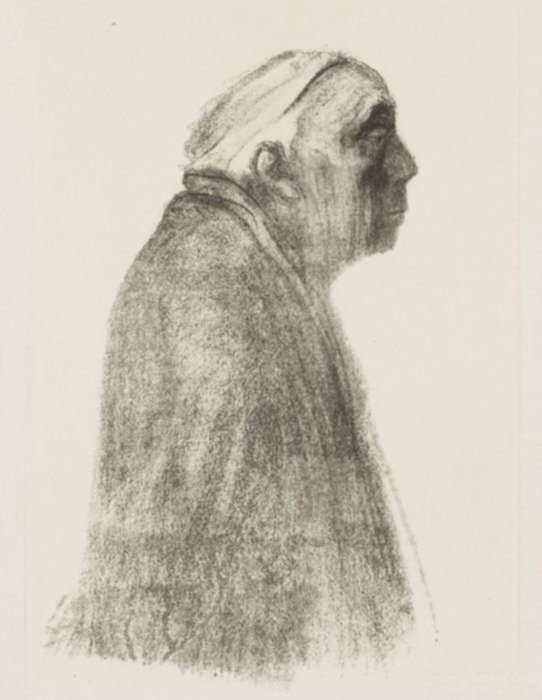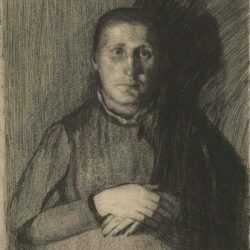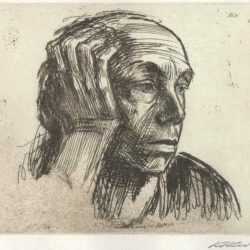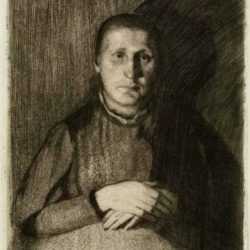Filter by Type
Filter by Category
Filter by Size
Filter by Year

Käthe Kollwitz
German (1867-1945)
Käthe Kollwitz, perhaps the most well known female German artist, was born in Königsberg in 1867. She began her art education in 1884 at the School for Women Artists in Berlin. The following year, she met Karl Kollwitz, a medical student; they married in 1890. Herr Kollwitz practiced in one of the poorest areas of Berlin, where Kollwitz was first exposed to the poverty and suffering of working-class Germans. She was greatly affected by the struggle of the lower class, and this, as well as industry and war, became a central theme in her work.
In 1893, Kollowitz expressed these realist influences in her first major series of etchings, Die Weberaufstand (The Weaver’s Revolt), which was influenced by Hauptmann’s realist play, The Weaver. The German art world admired this series of six prints and nominated it for a gold medal at the 1898 Berlin exhibition, a proposal that Kaiser Wilhelm II swiftly terminated. Though Wilhelm II greatly opposed Kollwitz’s realist style and subjects of social injustice, the German public responded positively to it, and Kollwitz’s reputation began to grow.
The first decade of the twentieth century was a productive period for Kollwitz. From 1902 to 1908, Kollwitz produced her second great series, The Bauernkrieg (The Peasants’ War). During this time Kollwitz also traveled to France to work at Academie Julian, where she was exposed firsthand by the Post-Impressionists and the Fauves. Kollwitz’s two children also began to influence her work during this decade; the theme of mothers and children began to appear frequently in her work.
As Kollwitz’s career progressed, her style shifted from realistic to expressionistic, but she never officially joined the German Expressionist movement. The World Wars, social and political unrest in general, as well as the death of her son on the battlefield in 1914 greatly influenced her increasingly abstract work. Hunched forms and shadows became important motifs, and her experience with the issues of a woman’s place in society also developed into a significant theme. Kollwitz often incorporated multiple printmaking techniques in a single print; aquatint, etching, and softground etching figured in many of her dark, emotional prints. Though Kollwitz died in 1945, she still occupies a significant place in printmaking.





![Print by Käthe Kollwitz: Frauenkopf [Female Head], represented by Childs Gallery](https://childsgallery.com/wp-content/uploads/k_the_kollwitz_frauenkopf__female_head__18-01-52_childs_gallery-250x250.jpg)
![Print by Käthe Kollwitz: Sitzender Mannlicher Akt [Sitting male nude], represented by Childs Gallery](https://childsgallery.com/wp-content/uploads/k_the_kollwitz_sitzender_mannlicher_akt__sitt_18-01-50_childs_gallery-250x250.jpg)


